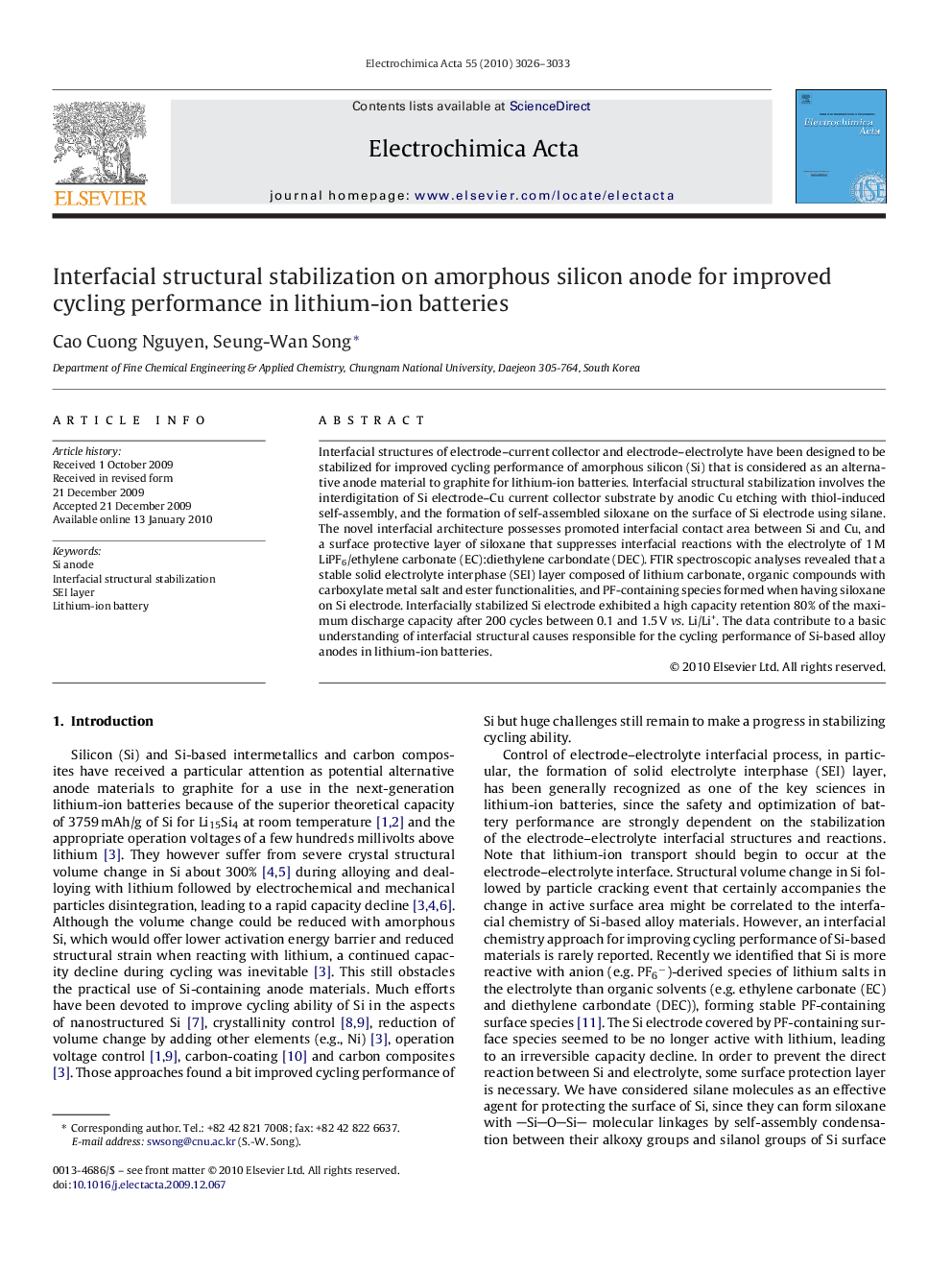| Article ID | Journal | Published Year | Pages | File Type |
|---|---|---|---|---|
| 190905 | Electrochimica Acta | 2010 | 8 Pages |
Interfacial structures of electrode–current collector and electrode–electrolyte have been designed to be stabilized for improved cycling performance of amorphous silicon (Si) that is considered as an alternative anode material to graphite for lithium-ion batteries. Interfacial structural stabilization involves the interdigitation of Si electrode–Cu current collector substrate by anodic Cu etching with thiol-induced self-assembly, and the formation of self-assembled siloxane on the surface of Si electrode using silane. The novel interfacial architecture possesses promoted interfacial contact area between Si and Cu, and a surface protective layer of siloxane that suppresses interfacial reactions with the electrolyte of 1 M LiPF6/ethylene carbonate (EC):diethylene carbondate (DEC). FTIR spectroscopic analyses revealed that a stable solid electrolyte interphase (SEI) layer composed of lithium carbonate, organic compounds with carboxylate metal salt and ester functionalities, and PF-containing species formed when having siloxane on Si electrode. Interfacially stabilized Si electrode exhibited a high capacity retention 80% of the maximum discharge capacity after 200 cycles between 0.1 and 1.5 V vs. Li/Li+. The data contribute to a basic understanding of interfacial structural causes responsible for the cycling performance of Si-based alloy anodes in lithium-ion batteries.
